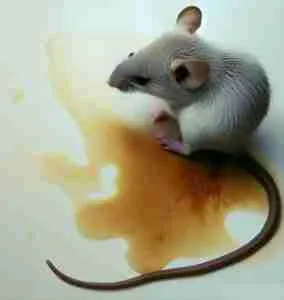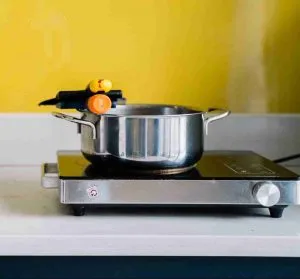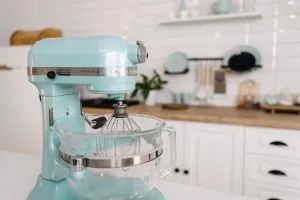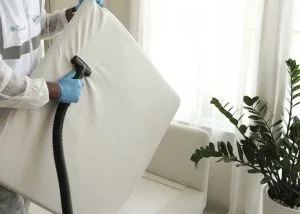Contents
ToggleKey Takeaways:
- Flax seeds can go bad if not stored properly: It is important to understand how to store flax seeds correctly to ensure their freshness and prevent spoilage.
- Flaxseed storage impacts its shelf life: Factors such as temperature, moisture, and exposure to light can affect the shelf life of flax seeds. Proper storage in an airtight container in a cool, dry place can help extend their freshness.
- Signs of bad flax seeds: Rancid or off-smelling flax seeds, a bitter taste, or a change in color can indicate that flax seeds have gone bad. It’s important to check for these signs before consuming or using them in recipes.
Does Flax Seed Go Bad?
Flax seed, a popular health food, requires proper storage to maintain its quality and freshness. How long does flax seed last? Similar to questions like how long do pansies last, the shelf life of flax seed depends on various factors, including storage conditions and packaging.
When stored in the pantry, flax seed typically remains fresh for up to a year. However, refrigeration can extend its shelf life to two years, thanks to the lower temperatures that slow down the oxidation process. To retain its nutritional value, it is best to keep flax seed in an airtight container in a cool, dark place.
In addition to proper storage, it is crucial to monitor the quality of flax seed. Over time, its natural oils can turn rancid, resulting in an unpleasant taste and odor. A simple sensory test can help determine if flax seed has gone bad. If it smells off or has a bitter taste, it is advisable to discard it.
Interestingly, a study published in the Journal of Agricultural and Food Chemistry found that whole flax seeds tend to have a longer shelf life than ground flax seeds. This is due to the exposure of the inner oils when grinding the seeds. Therefore, it is recommended to grind flax seed just before consumption to maximize its freshness and nutritional benefits, similar to how one would consider growing a cherry tree from seed.
Flax seed is a valuable source of omega-3 fatty acids, fiber, and other essential nutrients. When stored properly, it can retain its quality and nutritional value for an extended period, ensuring you can enjoy its health benefits.
Flaxseed Basics

Flaxseed, a nutritious superfood, offers numerous health benefits. It is rich in omega-3 fatty acids, fiber, and lignans. When stored properly, flaxseed can have a long shelf life.
However, it is important to know when flaxseed goes bad. Storing it in an airtight container in the refrigerator helps to maintain freshness and prevent rancidity.
Properly stored flaxseed can last for up to a year. Additionally, grinding whole flaxseeds just before consumption ensures maximum nutritional benefits. Remember to check for any signs of spoilage, such as a rancid smell or taste, to ensure the best quality flaxseed for consumption.
How Long Flax Seeds Last
Flax seeds can stay fresh for varying lengths of time, depending on storage conditions. Here are three key points to consider:
- Properly stored whole flax seeds can last up to a year. It is crucial to keep them in an airtight container in a cool, dark place, such as a refrigerator or pantry.
- Ground flax seeds have a shorter lifespan. They can retain their freshness for about three to six months when stored in similar conditions as whole seeds.
- Flax oil, extracted from the seeds, is more perishable due to its higher fat content. It is best to consume it within a few weeks of opening the container or following the manufacturer’s instructions.
In addition, it’s important to note that once flax seeds turn rancid, they should be discarded immediately. Rancidity can be detected by a strong, unpleasant smell and a bitter taste.
True History:
Flax seeds have been cultivated for their nutritional benefits for thousands of years, with evidence dating back to ancient civilizations such as Egypt and Mesopotamia. These seeds have long been recognized for their abundance of omega-3 fatty acids, fiber, and other essential nutrients, making them a valuable addition to a healthy diet.
Signs of Bad Flax Seeds
Signs of Bad Flax Seeds:
- Moldy appearance or unpleasant odor
- Rancid or bitter taste
- Change in color, turning dark or yellowish
- Slimy or sticky texture
These signs of spoilage indicate that the flax seeds have gone bad and should not be consumed. It is important to regularly check the condition of flax seeds as they can deteriorate over time.
Proper storage in a cool and dry place can help extend their shelf life. Consuming bad flax seeds may lead to digestive discomfort or potential health risks. Therefore, it is advisable to discard them if any of these signs are observed.
Proper Storage of Flax Seeds

Flax seeds require careful storage to maintain their freshness and nutritional properties. Follow these guidelines to ensure the proper storage of flax seeds:
- Keep them in an airtight container: To prevent exposure to air, moisture, and light, store flax seeds in a sealed container made of glass or a BPA-free material.
- Store in a cool, dry place: Flax seeds should be kept in a cool and dry pantry or cupboard, away from direct sunlight or heat sources, as exposure to heat can cause them to go rancid.
- Refrigerate for longer shelf life: For longer-term storage and to extend their shelf life, refrigerating flax seeds is recommended. The cold temperature helps preserve their freshness and nutritional value.
- Grind as needed: Whole flax seeds have a longer shelf life compared to ground flax seeds. It is advisable to grind them as needed to maintain their freshness and prevent oxidation.
- Use opaque containers: If you prefer to store flax seeds at room temperature, opt for opaque containers to protect them from light exposure, which can degrade their nutritional content.
- Check for freshness: At regular intervals, inspect flax seeds for signs of spoilage, such as a rancid smell or taste. If they exhibit these characteristics, it is advisable to discard them.
Furthermore, it is important to note that flax seeds contain natural oils, and over time, these oils can go bad, leading to a decline in quality. By following the proper storage methods mentioned above, you can ensure that your flax seeds remain fresh and maintain their nutritional benefits for a longer duration.
Conclusion: Ensuring Fresh Flax Seeds
Fresh flax seeds can be ensured by following a few guidelines.
Firstly, storing them in an airtight container in a cool and dark place helps maintain their freshness.
Additionally, it is important to check the expiration date before purchasing flax seeds.
Moreover, regularly inspecting the seeds for any signs of spoilage or rancidity is crucial.
To further ensure freshness, consuming flax seeds within a reasonable time frame is recommended. These practices help preserve the nutritional value and taste of flax seeds.
Some Facts
- ✅ Flaxseeds can go bad, just like any seed, and will eventually turn. (Source: BHG.com)
- ✅ Whole flaxseeds can last months past the expiration date, especially if stored in the fridge. (Source: BHG.com)
- ✅ Ground flaxseed can go bad as soon as a week after the expiration date. (Source: BHG.com)
- ✅ Rancid flaxseeds release an off-putting sour odor, signaling that they are no longer safe to eat. (Source: BHG.com)
- ✅ Storing flaxseeds in an airtight container in a cool, dark pantry or the fridge can help extend their shelf life. (Source: BHG.com)
FAQs about Does Flax Seed Go Bad
Does flaxseed go bad?
Yes, just like any seed, flaxseeds will eventually turn. The expiration date on the package is a good guideline, but flaxseeds can last beyond that date depending on how they were processed and stored.
How can I tell if my flaxseeds have gone bad?
You can give your flaxseeds the smell test. If they have a sour odor or any sort of bitter flavor, it’s a sign that they are rancid and should be discarded.
How long can flaxseeds be stored?
If you have whole flaxseeds, they can last months past the expiration date, especially if stored in the fridge. Ground flaxseed, on the other hand, can go bad as soon as a week after the expiration date.
How should I store flaxseeds?
To keep your flaxseeds fresh for longer, store them in an airtight container. While it’s not required to refrigerate them, a cool, dark pantry or the fridge can help extend their shelf life. According to the USDA’s Foodkeeper App, flaxseeds will last up to a year when stored in the fridge or freezer.
Should I choose whole flaxseeds or ground flaxseed meal?
It is recommended by most nutritionists to consume ground flaxseed because it is easier to digest, allowing you to reap more of their health benefits. If you don’t think you’ll use up ground flaxseed quickly, opt for whole flaxseeds and grind them as needed.
Can flaxseeds be used as a vegan egg substitute?
Yes, flaxseeds can be used as a vegan egg substitute in baking. To create a flaxseed “egg,” mix 1 tablespoon of ground flaxseed with 3 tablespoons of water and let it sit for a few minutes to thicken. This mixture can be used as a binding agent in recipes that call for eggs.
Additional Reading
As you explore the details on flax seed preservation, here are some articles that offer insight into other varied gardening and home topics:
- How to Revive Hydrangeas: Dive deep into the methods that can rejuvenate and breathe life back into wilted hydrangeas, ensuring they remain a vibrant addition to your garden.
- Watering Orchids with Ice Cubes: Learn about this unconventional yet effective method of watering orchids. The article offers insights into the pros and cons of this technique.
- Growing Pumpkins in Small Spaces: Don’t have a sprawling garden? No problem. Explore innovative ways to grow pumpkins even if you have limited space at your disposal.
- Get Rid of Ground Moles: Delve into strategies and tips on eradicating these underground nuisances, ensuring your garden remains pristine and mole-free.
- When is Tomato Season?: Understand the prime time for growing and harvesting tomatoes. This guide will ensure you’re well-prepared to cultivate these red gems at the right time.























































